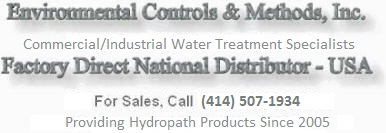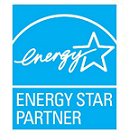


| Tips on Managing Chloramines |
Managing Chloramines in Pools and SpasThat nasty smell around the pool is not the chlorine, it's CHLORAMINES. Chloramines are the result of chlorine bonding with ammonia, or other chemical compound. (thank the kid for peeing in the pool) Most any time that chlorine does it's job of disinfection, chloramines are the result. Although a heavily used pool will always have a faster buildup of combined chlorine, it is possible to extend the time between backwashing quite significantly. |
|
|
Our AquaKLEAR units (with Hydropath Technology) help manage chloramines in pools, spas, ponds, cooling towers, holding tanks, etc. by breaking down the chemical bonds of the chloramines, and reverting them back to free chlorine. We have had a great degree of success in treating even the most heavily used spas, where the ratio of people vs. water is much more significant than in pools. One water park we worked with was able to go from a DAILY dump of a 5,000 gallon spa, to a weekly backwash and dump. This resulted in a savings of over 30,000 gallons per week, not to mention the reduced heating and other maintenance costs. This being in a spa which typically is shoulder to shoulder with people every day. While the use of chloramines in drinking water systems is often used in conjunction with chlorine, (because chloramines are much more stable and can treat longer distances of pipe networks, although being much less effective), its use for disinfection in pool and spa applications are undesirable due to the smell, reaction on swimwear and equipment, and other negative side effects it poses, as well as a reduced ability to disinfect the water. AquaKLEAR acts to break the bonds of chloramines, and reverts the chloramines back into the desirable free chlorine state. This process is actually somewhat dependant upon the flocculation effect the unit achieves. To enable the process to work, some form of material must be present within the system, or the free chlorine will tend to re-bond with ammonia, nitrogen, or even other chlorine molecules and revert back to chloramines. In functioning pools, spas, or other various types of equipment, the desired process is usually no problem to achieve. Skin, bacteria, and various compounds from the swimmers are present for the free chlorine to actively bond with and flocculate out. In a sterile lab environment used for typical types of testing, this interaction is much more difficult to test against without "synthetic load contamination", or the effect will be much less evident. We have found best success in pools which are moderate to heavily used for this reason. Managing chloramines in spas may be less effective due to the higher levels of chloramines often found in this type of equipment due to a higher concentration of people in a spa during heavy use. The bottom line is that the existing filtration system MUST be able to provide an adequate turn-over rate for the Savastat SC unit to be able to treat a sufficient volume of water to control rising chloramines in very heavily used spas. Often times the pumps on spas are under-specified for this task. When implementing AquaKLEAR, a noticeable effect will typically be seen very quickly, often in as little as a day or two days. The foul "chlorine smell", which is actually associated with chloramines, in most cases completely goes away. Chlorine usage can often reduced by as much as 2/3rds, and automated dosing units will achieve this without specific interaction if they sample for total chlorine levels. Since the Savastat SC is also providing disinfection, total chlorine levels can be kept at a minimum. AquaKLEAR:
|
|
Copyright © 2003-2009 ECMI
